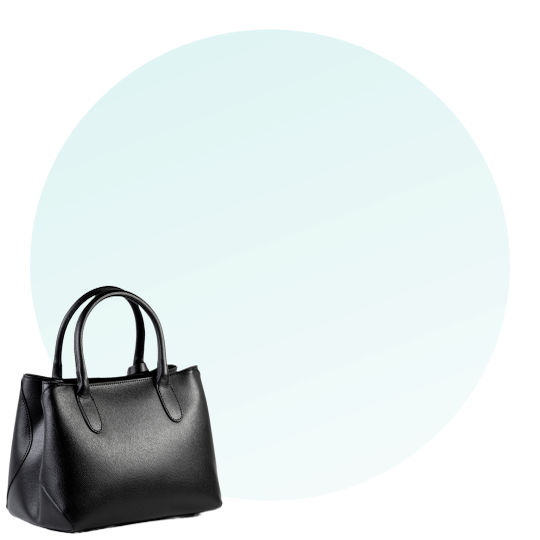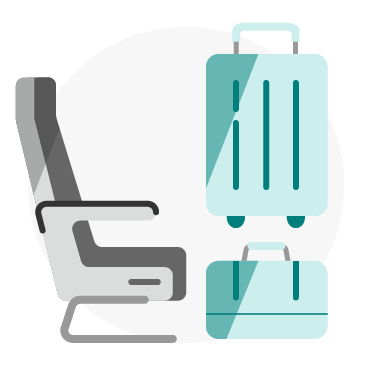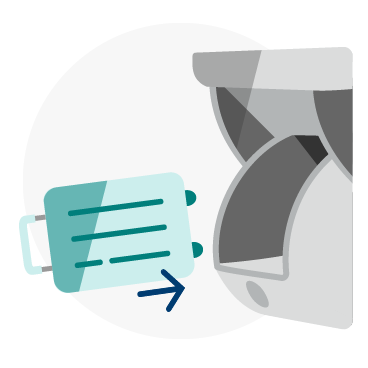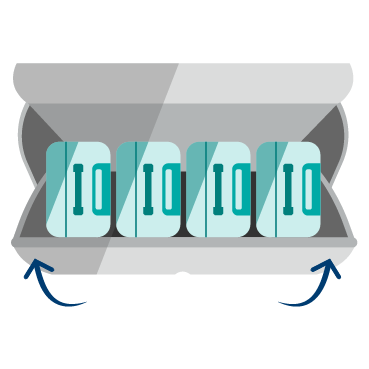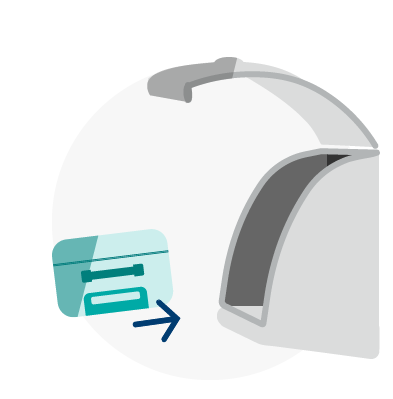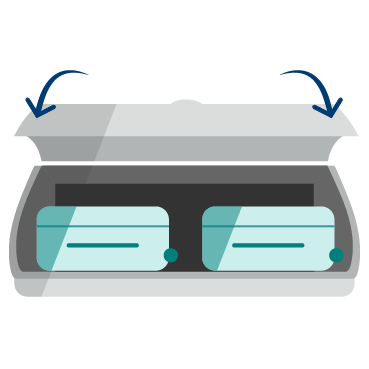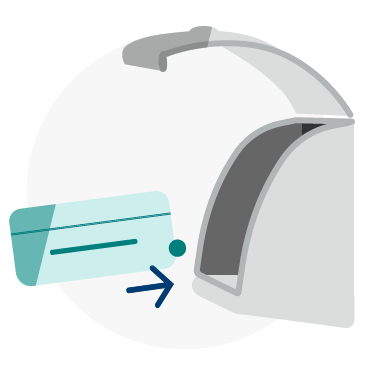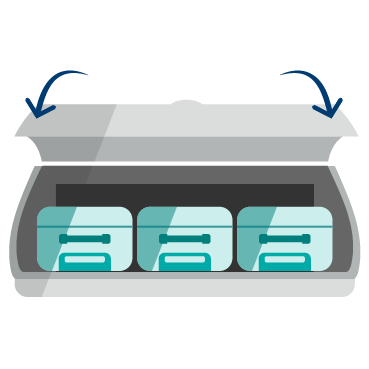| Item |
Additional information |
|---|
A diaper bag
|
Must contain items for an infant
|
An approved restraint system (car seat)
|
For use in a seat that has been purchased
|
Blood
|
- Up to two litres of blood intended for personal use will be accepted as carry-on. Blood for non-personal use must be shipped as cargo.
Blood must be packaged in either plastic vials with screw-top lids taped shut, single-use vacuum collection tubes, or sealed plastic bags (preferably double-bagged).
- As blood is handled as a perishable item, it must be packaged in a leak-proof container that is resistant to vibration or damage (such as a cardboard-enclosed StyrofoamTM box ice chest) with cold packs for cooling, and the container must then be single or double strapped with tape, string or elastic bands.
- Airport security screening may request a letter issued by an authorized agency to confirm that the blood is non-infectious. Infectious blood samples are not accepted for transport.
- If you are travelling internationally, it is your responsibility to confirm acceptance guidelines with customs at the destination country.
|
Cremated remains
|
- Cremated remains are accepted in addition to carry-on and personal baggage allowance for all fare classes including UltraBasic.
- Up to 350 milliliters (mL) of cremated remains are accepted as carry-on baggage. If the volume is more than 350 mL, the cremated remains may be transported in checked baggage.
- The Canadian Air Transport Security Authority recommends that cremated remains be transported in temporary containers (such as those made from plastic, cardboard or cloth) as these containers are more likely to scan clearly and pass security screening.
- An empty permanent container made of stone, metal, or ceramic may be transported in carry-on or checked baggage.
- All carry-on items must go through security screening, documentation from a funeral home does not provide an exemption from screening.
- Screening officers are not permitted to open cremation containers and will not inspect the contents if you open it yourself.
- Containers that do not pass security screening will not be accepted as carry-on or checked baggage.
- Documentation is not specified but may be required depending on the guest's itinerary and destination. WestJet recommends the guest carry:
- Death certificate.
- Certificate of Cremation.
- If the remains are those of an animal, additional documentation from a veterinarian indicating the animal has been properly cremated.
- For information about transporting cremated remains to a specific destination, please review the local consulate website.
- For more information about travelling with cremated remains and meeting CTSA requirements, please see visit catsa.gc.ca
|
Duty free merchandise
|
- Duty-free alcohol purchased after security is allowed as carry-on baggage on direct flights operated by WestJet aircraft. Alcohol must be checked on WestJet flights with transfers or connections, or when it is purchased before clearing security.
- WestJet guests transferring from one of our airline partners originating in the European Union are permitted duty-free purchases as carry-on, providing the alcohol is packaged by the duty free vendor in a tamper-evident bag.
- Duty free items must be consolidated with your fare’s carry-on bag and personal item allowance. Duty free is not allowable as an additional baggage item.
|
Food items
|
Food items may be brought on board for consumption during the flight. Items not consumed will be considered part of your fare’s carry-on bag and personal item allowance.
|
Fragile items
|
- Delicate scientific instruments
- Human organs for transplant
|
| Medical devices |
- Approved battery-powered portable oxygen concentrators for personal use may be used inflight.
- We may accept irregularly sized approved medical devices which exceed the carry-on baggage allowance, if the device can be stowed in an approved location without exceeding the weight limit for the most appropriate area in the aircraft, and it will not obstruct access to safety equipment, exits or the aisle. In all cases, acceptance of these items is at the sole discretion of WestJet.
- More details can be found in restricted items.
|
Medical syringes or needles
|
- Will only be accepted when accompanied with medication that is professionally/pharmaceutically labelled with the guest's name.
|
Medication
|
- In the original labelled container
|
Mobility devices
|
- Examples include braces, canes, crutches and walkers
|
Personal clothing items/outerwear
|
|
Personal electronic devices
|
Battery-powered personal electronic devices may be transported for personal use and may be used when permitted by the inflight crew. Examples include:
- Air purifiers
- Calculators
- Cameras
- Cordless noise filtering headsets
- Electric watches
- Entertainment systems
- eReaders
- Hearing aids
- Heart pacemakers
Guests may transport but may not use the following personal electronic devices in the cabin:
- Electronic cigarettes
- Vaporizers
|
| Stroller |
—
|
| Transmitting portable electronic devices |
Battery-powered transmitting portable electronic devices may be taken in carry-on baggage, however because they transmit a signal, they must be set in "Airplane mode", which turns off the connectivity to cellular/mobile networks. You may use these in "Airplane mode" when advised by your inflight crew.
Some examples of a transmitting portable electronic device include:
- Cellular phones
- Entertainment/gaming devices
- Tablets
Guests may take, but not use the following items in the cabin:
- AM/FM transmitters and receivers
- Remote-controlled toys, such as drones
- CB radios
- Portable two-way radio communication devices
|
